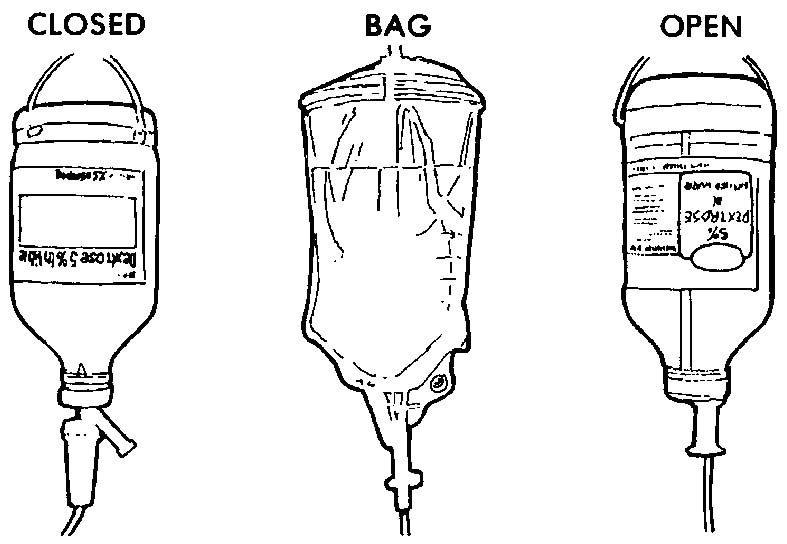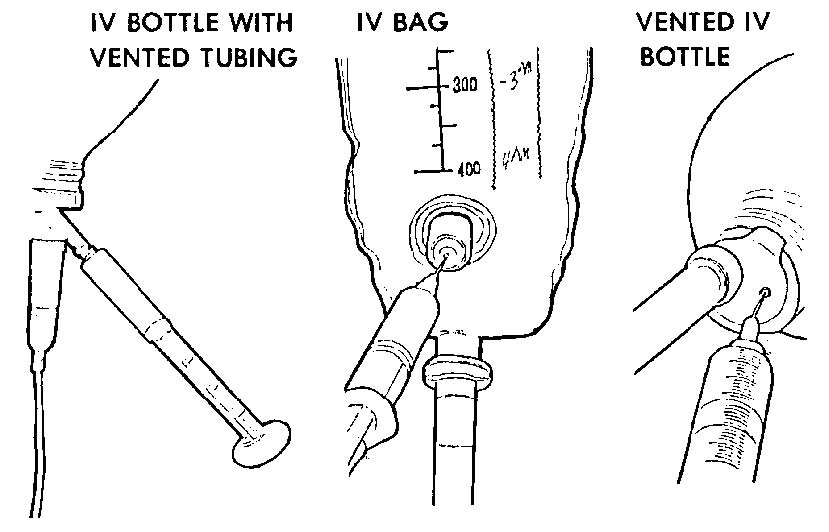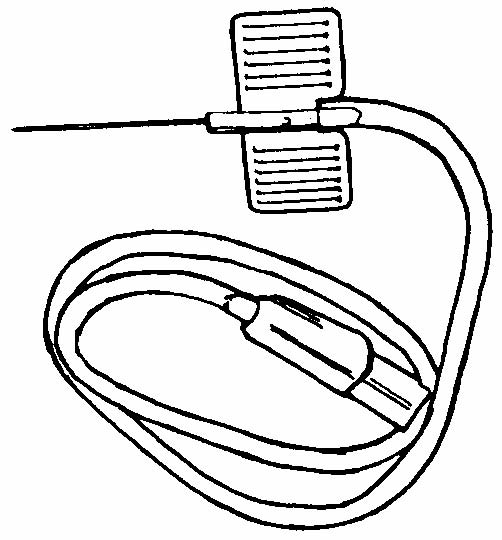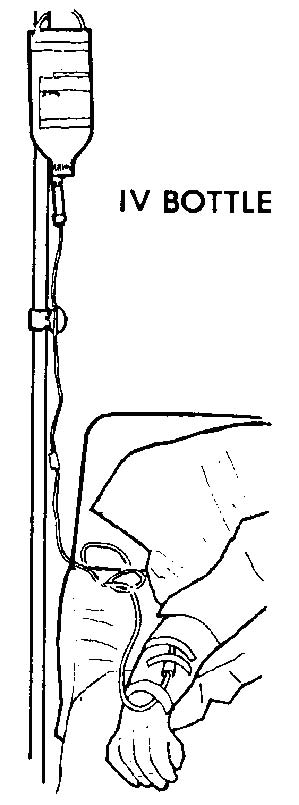Blood, Electrolytes, and Intravenous Infusions
3-23
3-23. EQUIPMENT REQUIRED FOR THE INFUSION
The equipment used for both the infusion and the transfusion have many similarities and some differences. The equipment for the infusion is normally available in the field. Usually, the transfusion setup is available where blood products are administered.
a. Containers. There are three types of fluid container systems in current use, the closed system, the open system, and the plastic bag (see figure 3-1).
Figure 3-1. Containers for infusion solutions.
(1) Closed system. The closed system bottle has an air vent through which medication may be added. A filter must be removed and then replaced. The sterility of the solution can be destroyed by careless handling of this filter.
(2) Open system. The open system bottle draws in added medication by vacuum, so this vacuum must be carefully maintained. The level of fluid remaining in the bottle is easily noted in both the open and closed systems.
(3) Plastic bag. The plastic bag has a port for adding the medication, but has no vacuum. Special care must be taken to be sure that the set is clamped off and medication is well mixed to prevent the patient from getting a toxic dose of the medication. It is difficult to judge the fluid remaining in the bag because it collapses as the fluid is withdrawn. Figure 3-2 shows medication being added to the three systems.
Figure 3-2. Adding medication to solutions.
b. Drip Chamber. The drip chamber measures the rate of flow, as ordered by the doctor. There are several types of chambers. An example is shown in figure 3-3.
Figure 3-3. A drip chamber.
c. Tubing. The tubing and clamp are part of the administration set. There is enough tubing to allow an ambulatory patient to move around.
d. Filters. Some filters are already in the administration set and some must be attached separately. The type of filter used will depend on the solution being infused.
e. Spikes. Each type of system has a spike, which must be inserted into the fluid container. After this is done, the line must be cleared of all air. This is done by gradually lowering the tubing from the fluid container until the whole line is filled with fluid. All air must be forced from the tubing. Then the tubing is clamped off. Sterility must be maintained throughout the assembly process.
f. Needle. The size and type of needle will depend on the fluid infused and the local SOP. Sizes used are 14, 16, and 18 gauge (a lower number indicates a larger bore). A commonly used needle is the butterfly type with plastic wings. Some needles allow the catheter to be inserted with the needle while some have over-the-needle catheters. Some examples are shown in figure 3-4.
Figure 3-4. Winged-tip needle. "Butterfly" (with tubing and adaptor).
g. Adhesive Tape. The needle/catheter must be taped in place to prevent dislodging or vein irritation. Tape application will depend on the type of needle/catheter used.
h. Constricting Band. Any firm strip may be used. Examples are rubber tubing, cravats, or a blood pressure cuff. The band must remain in place no longer than two minutes.
i. Antiseptic and 2 x 2 Gauze. The patient's skin must be cleansed at the venipuncture site, both before and after venipuncture. Antimicrobial ointment is usually applied at the site before taping the needle/catheter in place. Figure 3-5 shows an infusion in place.
Figure 3-5. Infusion in place.






